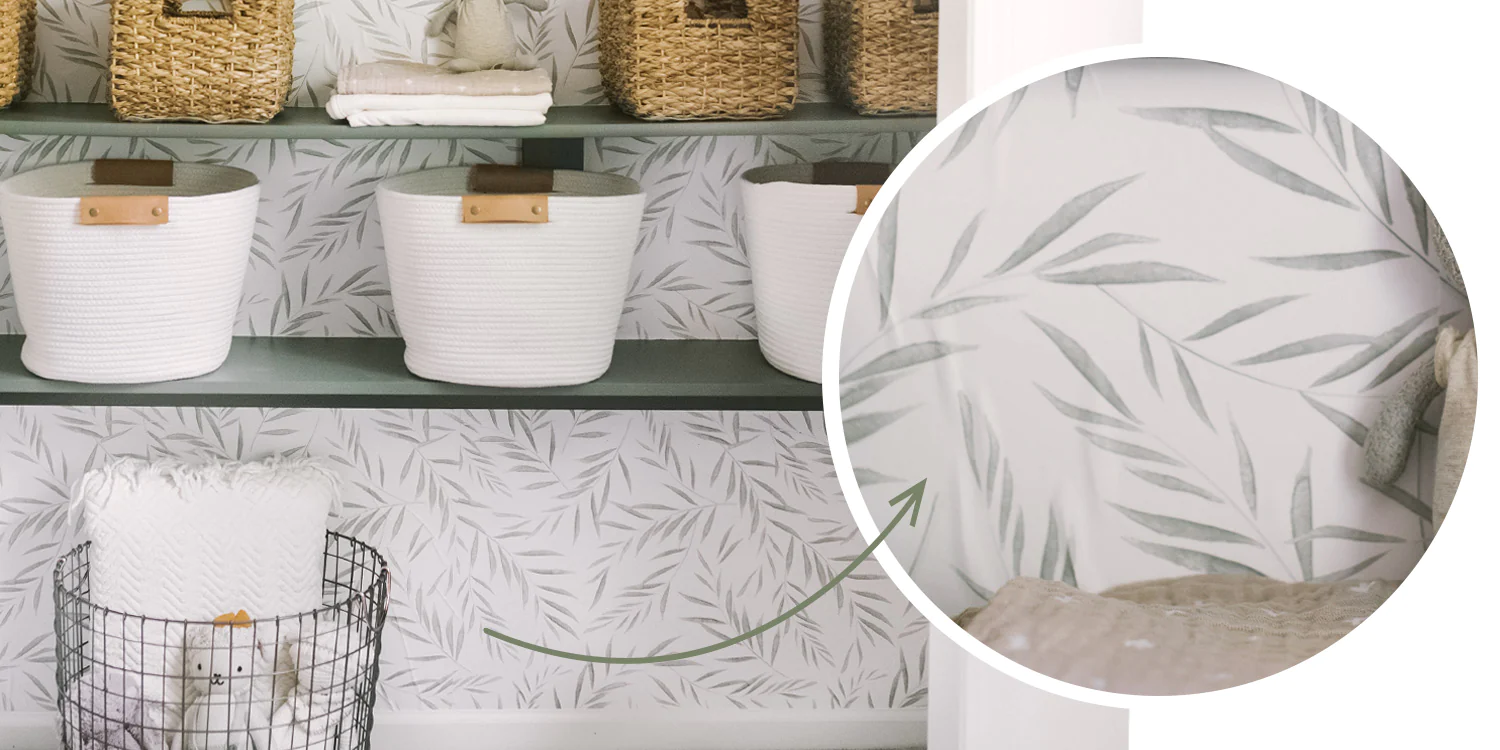
I. Introduction to Wallpaper Bubbles
A. Understanding the Nature of Wallpaper Bubbles
Wallpaper bubbles are a common occurrence in interior design that can detract from the aesthetic appeal of a room. These unsightly imperfections manifest as air pockets or raised areas on the wallpaper surface, disrupting the smooth and seamless look desired by homeowners.
B. Factors Contributing to the Formation of Bubbles
Several factors can contribute to the formation of wallpaper bubbles, including improper installation techniques, inadequate adhesive application, or environmental factors such as humidity and temperature fluctuations. Understanding the underlying causes of wallpaper bubbles is essential for effectively addressing and preventing their recurrence.
C. Importance of Addressing Wallpaper Bubbles Promptly
Addressing wallpaper bubbles promptly is crucial to maintaining the integrity and appearance of the wallpaper surface. Ignoring or neglecting bubbles can lead to further damage, such as peeling or tearing, necessitating costly repairs or replacement. By taking proactive measures to remove bubbles, homeowners can preserve the beauty and longevity of their wallpaper investment.
II. Tools and Materials for Bubble Removal
A. Essential Tools for Bubble Removal
To effectively remove bubbles from wallpaper, you will need several essential tools, including a smoothing brush or roller, seam roller, and utility knife or razor blade. These tools are designed to facilitate the removal and re-adhesion of wallpaper without causing damage to the underlying surface.
1. Smoothing Brush or Roller
A smoothing brush or roller is used to gently press out air bubbles and ensure proper adhesion of the wallpaper to the wall surface. The smooth, flat surface of the brush or roller allows for even pressure distribution, minimizing the risk of creases or wrinkles.
2. Seam Roller
A seam roller is specifically designed to flatten and smooth out seams and edges in wallpaper. Its narrow, cylindrical shape allows for precise control and maneuverability, making it ideal for addressing small bubbles and imperfections along seams and edges.
3. Utility Knife or Razor Blade
A utility knife or razor blade is used to make small incisions in the wallpaper surface, allowing trapped air to escape and facilitating the re-adhesion process. Care must be taken to avoid cutting too deeply or damaging the underlying wall surface.
B. Recommended Materials for Bubble Removal
In addition to essential tools, certain materials can aid in the bubble removal process and ensure optimal results. These materials include wallpaper paste or adhesive, a sponge or clean cloth, and wallpaper seam repair adhesive.
1. Wallpaper Paste or Adhesive
Wallpaper paste or adhesive is used to rehydrate and reactivate the adhesive properties of the wallpaper, allowing for easier manipulation and repositioning. It is essential to use a high-quality adhesive suitable for the type of wallpaper being used to ensure proper adhesion and longevity.
2. Sponge or Clean Cloth
A sponge or clean cloth dampened with water is used to apply moisture to the wallpaper surface, softening the adhesive and facilitating the removal of bubbles. Excess moisture should be avoided to prevent damage to the wallpaper or underlying wall surface.
3. Wallpaper Seam Repair Adhesive
In cases where bubbles occur along seams or edges, wallpaper seam repair adhesive can be used to reinforce and secure the wallpaper seam. This specialized adhesive is designed to penetrate and bond with the underlying layers of wallpaper, ensuring a durable and seamless repair.
III. Step-by-Step Process for Bubble Removal
A. Preparation and Assessment
Before beginning the bubble removal process, it is essential to inspect the wallpaper surface thoroughly and prepare the workspace for the task at hand.
1. Inspect the Wallpaper Surface
Carefully examine the wallpaper surface for any signs of bubbles, wrinkles, or imperfections. Note the location and severity of each bubble to determine the appropriate course of action for removal.
2. Prepare the Workspace
Clear the workspace of any obstacles or furniture that may hinder the bubble removal process. Lay down protective coverings or drop cloths to safeguard the surrounding area from moisture or adhesive spills.
B. Softening and Re-adhering the Wallpaper
Once the workspace is prepared, the bubble removal process can begin by softening and re-adhering the wallpaper to the wall surface.
1. Apply Moisture to the Bubble
Using a sponge or clean cloth dampened with water, gently apply moisture to the surface of the bubble. Allow the moisture to penetrate the wallpaper for several minutes, softening the adhesive and making it more pliable.
2. Smooth Out the Wallpaper
Using a smoothing brush or roller, gently press down on the bubble, starting from the center and working outward towards the edges. Apply even pressure to ensure proper adhesion and smooth out any remaining air pockets or wrinkles.
C. Repairing Stubborn Bubbles and Seams
In cases where bubbles are stubborn or persist along seams or edges, additional steps may be necessary to achieve a seamless repair.
1. Inject Adhesive into the Bubble
Using a utility knife or razor blade, carefully make a small incision at the center of the bubble, allowing trapped air to escape. Apply a small amount of wallpaper paste or adhesive to the incision point, then use a smoothing brush or roller to press the wallpaper firmly against the wall surface.
2. Flatten and Secure the Wallpaper Seam
For bubbles occurring along seams or edges, apply wallpaper seam repair adhesive to reinforce and secure the seam. Use a seam roller to flatten and smooth out the repaired area, ensuring a seamless finish.
IV. Tips and Techniques for Effective Bubble Removal
A. Avoiding Over-saturation
To prevent over-saturation and potential damage to the wallpaper, it is essential to use minimal moisture and work in small sections at a time.
1. Use Minimal Moisture
Avoid saturating the wallpaper with excess moisture, as this can weaken the adhesive and lead to further bubbling or lifting. Use a damp sponge or cloth to apply moisture sparingly, focusing on the immediate area of the bubble.
2. Work in Small Sections
Divide the wallpaper surface into small sections and focus on addressing one bubble at a time. Working in small sections allows for greater control and precision, ensuring optimal results without over-saturating the wallpaper.
B. Patience and Precision
Achieving a seamless finish requires patience, precision, and attention to detail throughout the bubble removal process.
1. Take Your Time
Take your time when removing bubbles, applying gentle pressure and making gradual adjustments as needed. Rushing the process can lead to mistakes or damage to the wallpaper surface, compromising the overall result.
2. Apply Gentle Pressure
When smoothing out bubbles, apply gentle but firm pressure with a smoothing brush or roller, starting from the center and working outward towards the edges. Avoid applying excessive force, which can cause creases or tears in the wallpaper.
C. Post-Removal Care and Maintenance
After removing bubbles, it is essential to allow the wallpaper to dry completely and inspect for any remaining imperfections.
1. Allow the Wallpaper to Dry Completely
Allow the wallpaper to dry completely before assessing the results of the bubble removal process. Drying times may vary depending on environmental factors such as humidity and temperature.
2. Inspect for Any Remaining Bubbles or Imperfections
After the wallpaper has dried, carefully inspect the surface for any remaining bubbles, wrinkles, or imperfections. Touch up any areas as needed, using the same techniques and tools outlined above to achieve a flawless finish.
V. Conclusion: Achieving Seamless Results
In conclusion, effectively removing bubbles from wallpaper requires a combination of the right tools, materials, and techniques. By following the step-by-step process outlined above and implementing tips and techniques for effective bubble removal, homeowners can achieve seamless results and restore the beauty and integrity of their wallpapered surfaces. With patience, precision, and attention to detail, addressing wallpaper bubbles can be a rewarding and satisfying endeavor, enhancing the overall aesthetic appeal of any interior space.


